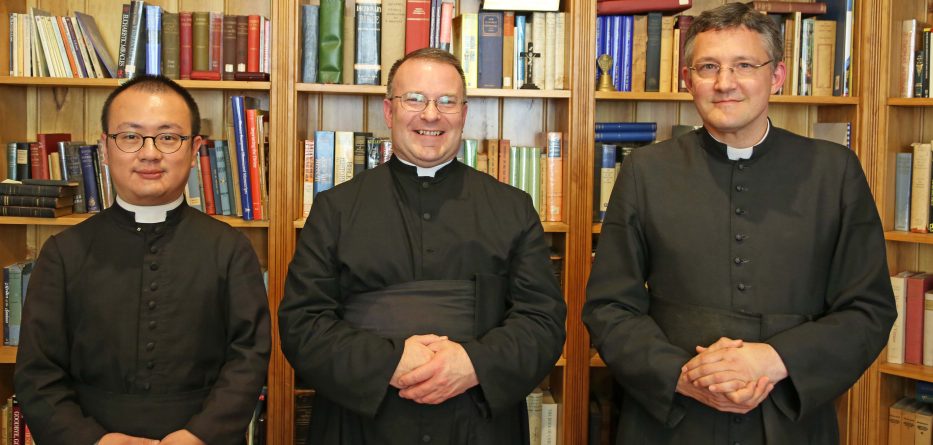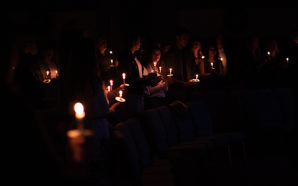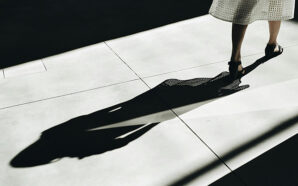The Extraordinary Form of the Roman Rite, also known as the Traditional Latin Mass, flourishes across the Diocese of Parramatta. This may be surprising to an older generation of parishioners who recall the introduction of the novus ordo Masses, in 1969, which ushered in the use of the vernacular, or the local language.
The Latin Mass has a revered and fascinating history, more recently including the story of the ‘Agatha Christie Indult’. Distinguished artists wrote to Pope Paul VI requesting the preservation of the Latin Mass, including Dame Joan Sutherland, Agatha Christie, Vladimir Ashkenazy, Robert Graves, Graham Greene and Kenneth Clark. On account of the petition, the Holy Father granted special permission for the use of the Latin Mass of 1962 in England and Wales.
More recently, last year marked the 10th anniversary of Pope Emeritus Benedict XVI’s Motu Proprio, Summorum Pontificum, which granted every Roman Catholic priest the right to offer the Latin Mass of 1962, officially known as the Extraordinary Form of the Mass.
Eternal Word Television Network made a helpful video explaining the Extraordinary Form Latin Mass offered by the FSSP (Priestly Fraternity of St Peter).
Many examples of the Latin Mass offered throughout the world can be found on YouTube, including historical Masses from Bishop Fulton Sheen up to and including present day bishops and cardinals.
Looking at the history of the Church, this is the same Latin Mass as Fr James Dixon and St Peter Chanel celebrated, and as St Mary of the Cross, St Therese of Lisieux, St Bernadette and, for that matter, all Roman Catholics experienced from the early centuries of the Church.
This universality can also be found by comparing the varied nationalities of the priests of the Fraternity of St Peter (FSSP) who serve this diocese: Fr Martin Klein hails from Germany, Fr Paul Leung from Hong Kong, Fr Richard Wallace FSSP from the USA, and the Regional Superior, Fr Christopher Blust, from Canada.
“Ever since we were invited into the Diocese in 2001, the FSSP has been blessed with the generosity of many people; from the gracious use of the locations where we live and offer daily Mass, to the many faithful who assist at our liturgical activities, to the volunteers who continue to help us to help build up the Mystical Body of Christ,” Fr Blust said.
People are attracted to the Latin Mass for a variety of reasons.
“Many may find the Latin ceremonies difficult, but the increased silent parts help some people prayerfully contemplate the sacred actions; others find the Masses that are accompanied by chant and incense quite edifying, as the ‘smells and bells’ help to join all of the senses and one’s whole being in worshipping God,” Fr Blust said.
“Many choose to attend the ceremonies for varied reasons; some for the Latin ceremonies, the chants and the sacred music; some for the preaching and availability of the priests; others for the reception of the Sacraments; others the family support and catechesis; some on account of the various devotions that enhance their week.”
Fr Paul Leung FSSP, who is the Chaplain for the Diocese of Parramatta, first encountered the Latin Mass in his native Hong Kong and found it fostered his spiritual growth. “It helped me to grow in relationship with God,” Fr Leung said.
He and Fr Blust both studied at Our Lady of Guadalupe International Seminary in Denton, Nebraska.
Fr Leung particularly enjoys working in the Diocese of Parramatta because of the fervent faith of the faithful and their heartfelt simplicity.
Fr Martin Klein studied at the French and German speaking Seminary of St Peter, Wigratzbad, Germany and felt called to the priesthood while he was a catechist with the Catholic Boy Scouts, an extensive Catholic youth movement in Europe.
“I grew up in a regular parish, and as a boy I became involved in the Catholic Boy Scouts. Our group restarted it locally and I helped lead it for 11 years while being a catechist.”
He first encountered the Latin Mass in Cologne in the 1990s; seeing it for the first time, he was very impressed by the sung Mass offered by a priest of the Fraternity of St Peter.
As for Fr Blust, he can still remember when he first served at a Latin Mass, aged 6, and afterwards wanting to imitate the retired priest’s actions at the altar.
When studying in university, he decided to pursue priestly studies after being edified by the examples of a number of diocesan priests in Vancouver. After studying under the Vancouver Benedictines for a year, he transferred to the Fraternity of St Peter’s seminary. After he was ordained in Nebraska, he ministered in the USA and Canada before being assigned to Australia, his home for over 5 years now.
If attending a Latin Mass for the first few times, one may see quite a variance in the ceremonies depending on the day, time, and feast day. There are several levels to the celebration of the Extraordinary Form of the Mass: a quiet Low Mass is the norm for weekdays; a Sung Mass (Missa Cantata) is more formal with Gregorian Chant and other sacred music; and a Solemn High Mass requires the additional functions of a Deacon and Subdeacon, who chant the gospel and epistle respectively.
The Latin Mass Chaplaincy’s extensive liturgical schedule can be found at their website, by clicking here.








